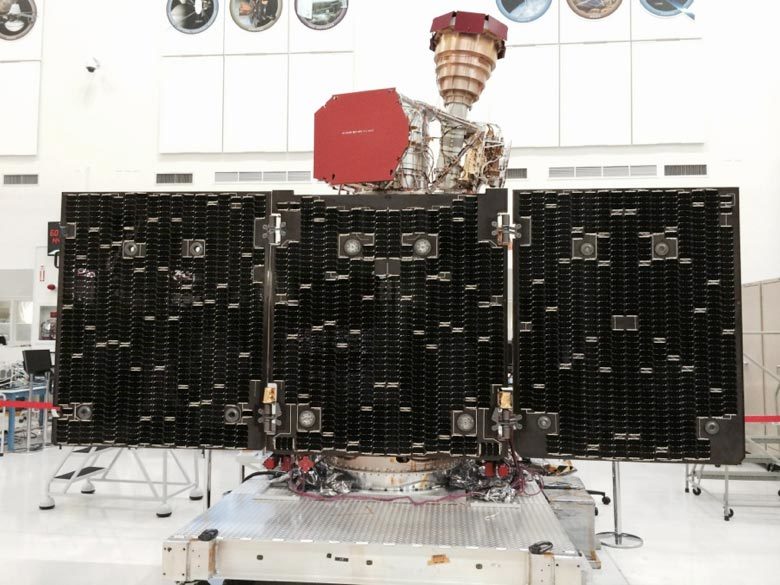Mission Description

The unfolded solar arrays to power SMAP and the golden feedhorn for its radar and radiometer are visible in this image taken during assembly and testing.
The Soil Moisture Active Passive (SMAP) mission is an orbiting observatory that measures the amount of water in the surface soil everywhere on Earth. A detailed description can be found in the SMAP Handbook (PDF, 4.09 MB). It was launched in January 2015 and started operation in April 2015. The SMAP radiometer has been operating flawlessly. The radar instrument, ceasing operation in early 2015 due to failure of radar power supply, collected close to 3 months of science data. The prime mission phase of three years was completed in 2018, and since then SMAP has been in extended operation phase.
The topsoil layer is the one in which the food we eat grows and where other vegetation lives. Moisture in the soil indirectly affects us in a variety of ways. In the course of its observations, SMAP will also determine if the ground is frozen or thawed in colder areas of the world.
SMAP is designed to measure soil moisture, every 2-3 days. This permits changes, around the world, to be observed over time scales ranging from major storms to repeated measurements of changes over the seasons.
Everywhere on Earth not covered with water or not frozen, SMAP measures how much water is in the top layer of soil. It also distinguishes between ground that is frozen or thawed. Where the ground is not frozen, SMAP measures the amount of water found between the minerals, rocky material, and organic particles found in soil everywhere in the world (SMAP measures liquid water in the top layer of ground but is not able to measure the ice.)
SMAP will produce global maps of soil moisture. Scientists will use these to help improve our understanding of how water, energy and carbon fluxes (in its various forms) maintain our climate and environment. The water cycle involves more than the obvious processes cycling through the steps of evaporation from the oceans and land to condensation forming clouds that then drop rain or snow on the ground (precipitation), followed by the water flowing across the land before returning to the sea. For example, plants absorb water from the soil to grow, but they also “transpire” some of it straight back into the air.
The carbon cycle has more branches than the water cycle. It refers to the transfer of carbon between and among Earth’s atmosphere (air), pedosphere (soil), lithosphere (rock), hydrosphere (surface water: ocean, lakes, and rivers), and the cryosphere (all forms and places where ice is found on Earth including sea ice, snow, glaciers, and permafrost). For example, carbon (in the form carbon dioxide) is found in the air, dissolved in water, and emitted from underground sources as well everything that breathes. Carbonate minerals are found on the sea floor and in mountains, as well as the famous White Cliffs of Dover. Petroleum and coal are carbon that is trapped underground until it is pumped up or mined. All of these forms of carbon can cycle in various ways among the ‘spheres.
Weather and climate studies will use SMAP data as well. The amount of water that evaporates from the land surface into the atmosphere depends on the soil moisture. Soil moisture information is key to understanding the flows of water and heat energy between the surface and atmosphere that impact weather and climate. SMAP data acquired since April 2015 has provided ample information about soil moisture variability at either regional or global scales. Frequent and reliable soil moisture measurements from SMAP will help improve the predictive capability of weather and climate models.




